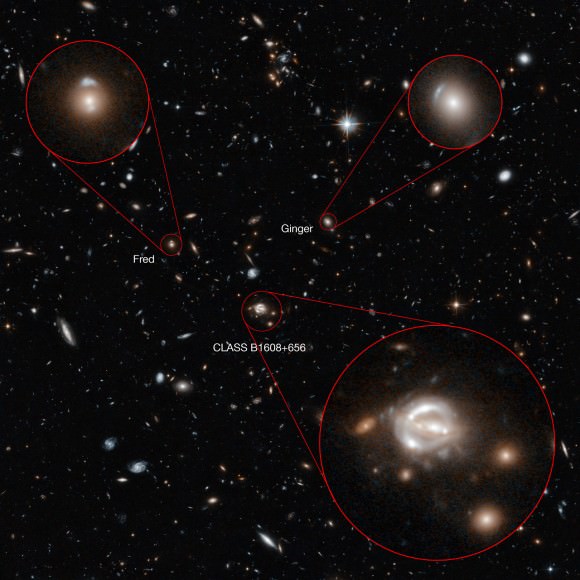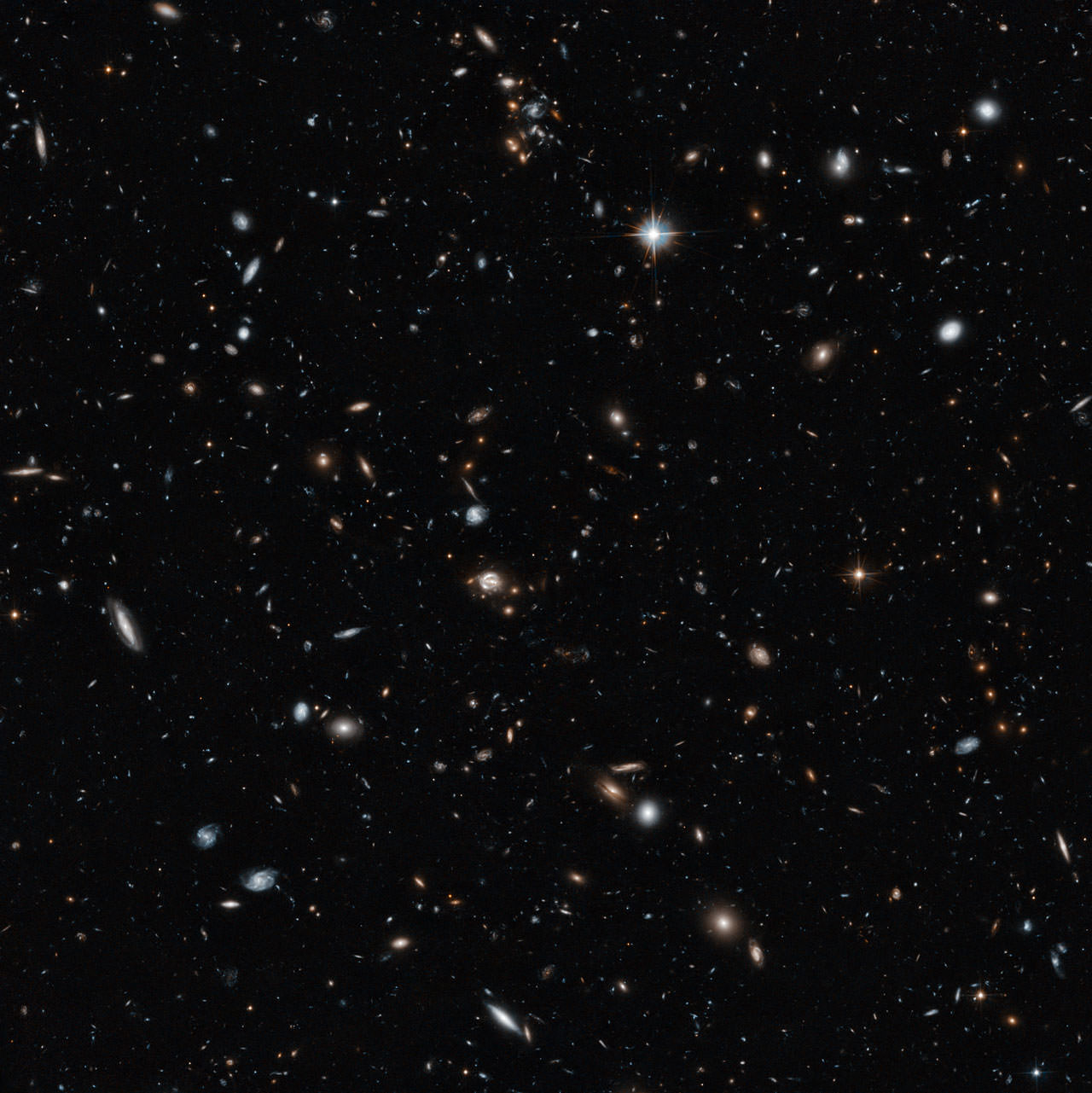While this image isn’t as deep as the Hubble Deep Field, this 14-hour exposure by the Hubble Space Telescope shows objects around a billion times fainter than what can be seen with the human eyes alone. Astronomers say this image also offers a remarkable depth of field that lets us see more than halfway to the edge of the observable Universe.
As well, this image also provides an extraordinary cross-section of the Universe in both distance and age, showing objects at different distances and stages in cosmic history, and ranges from some of our nearest neighbors to objects seen in the early years of the Universe.

Most of the galaxies visible here are members of a huge cluster called CLASS B1608+656, which lies about five billion light-years away. But the field also contains other objects, both significantly closer and far more distant, including quasar QSO-160913+653228 which is so distant its light has taken nine billion years to reach us, two thirds of the time that has elapsed since the Big Bang.
Since the Hubble Deep Field combined 10 days of exposure and the eXtreme Deep Field, or XDF was assembled by combining ten years of observations (with over 2 million seconds of exposure time), this image at 14 hours of exposure may seem “small.” But it shows the power of the Hubble Space Telescope.
Also of note is that this image was “found” in the Hubble Hidden Treasures vault — where members of the public are able to search Hubble’s science for the best overlooked images that have never been seen by a general audience. This image of CLASS B1608+656 has been well-studied by scientists over the years, but this is the first time it has been published in full online.
Take a zooming view through the image in the video below and read more about this image here.
Source: Hubble ESA

